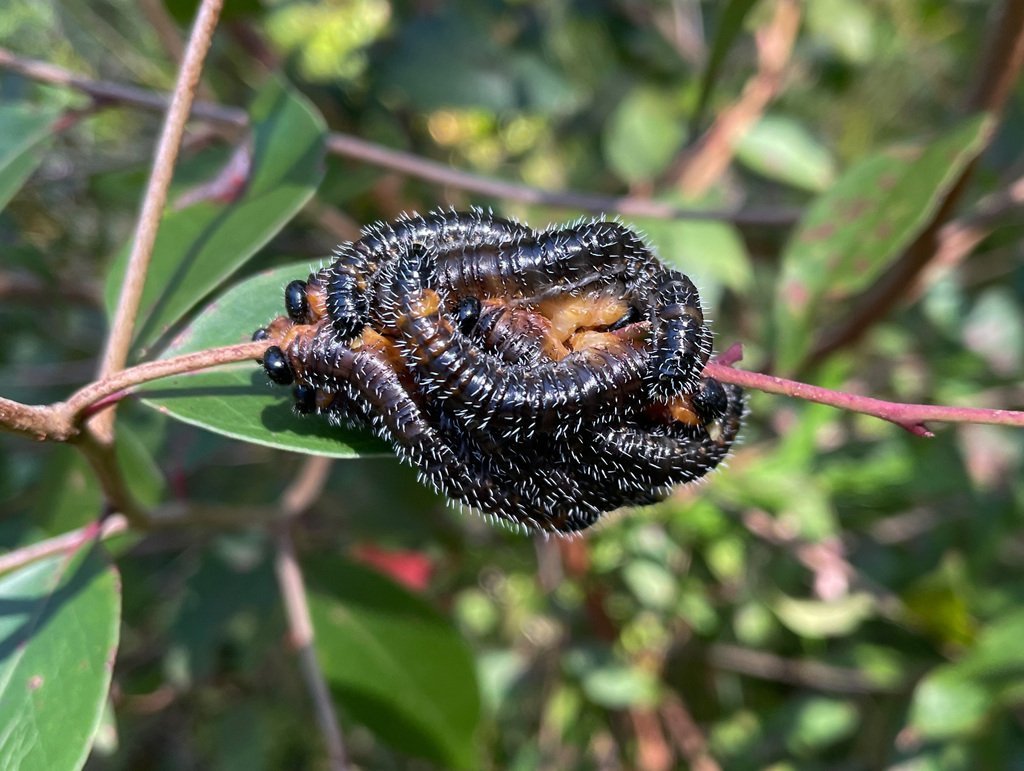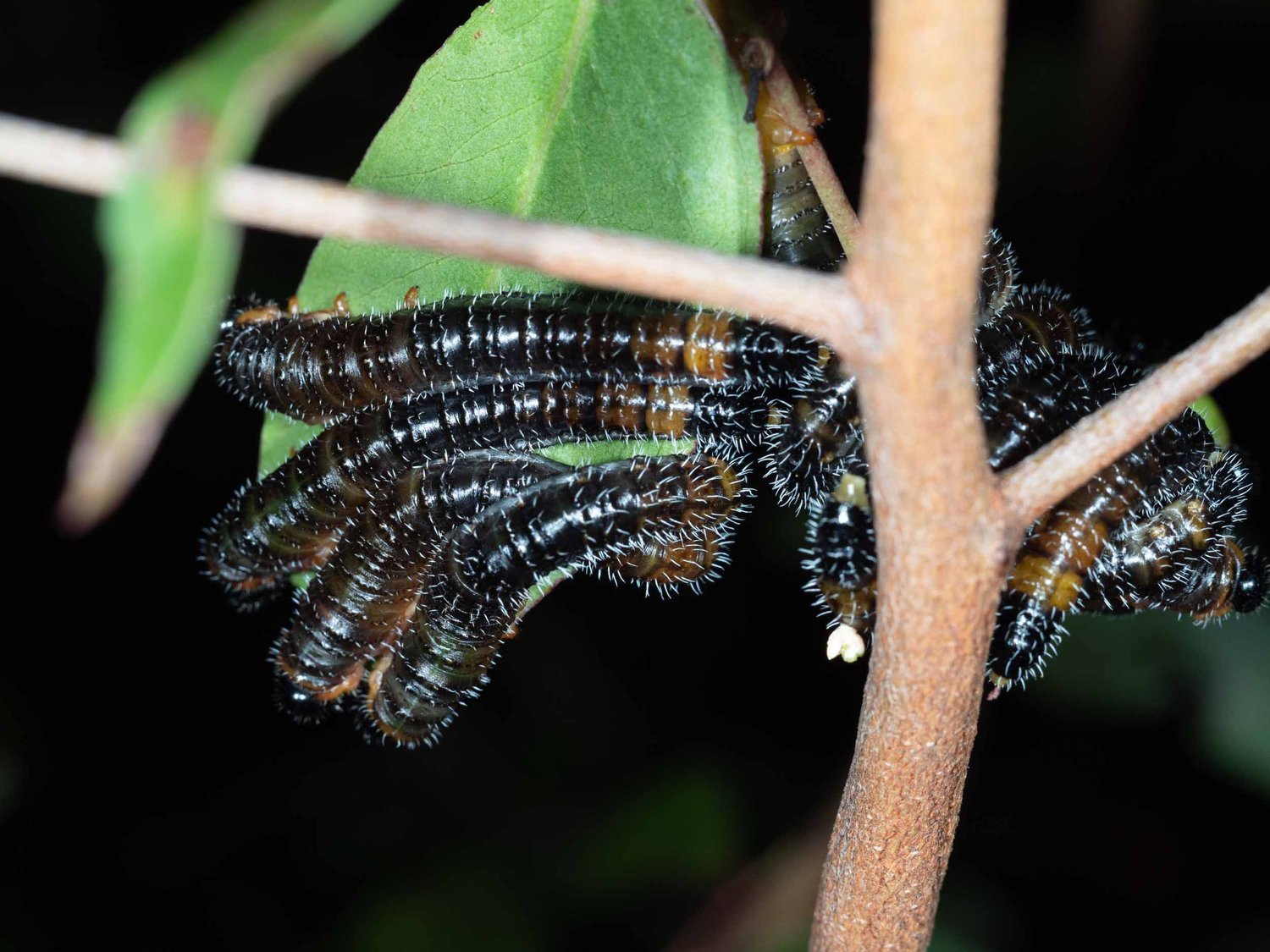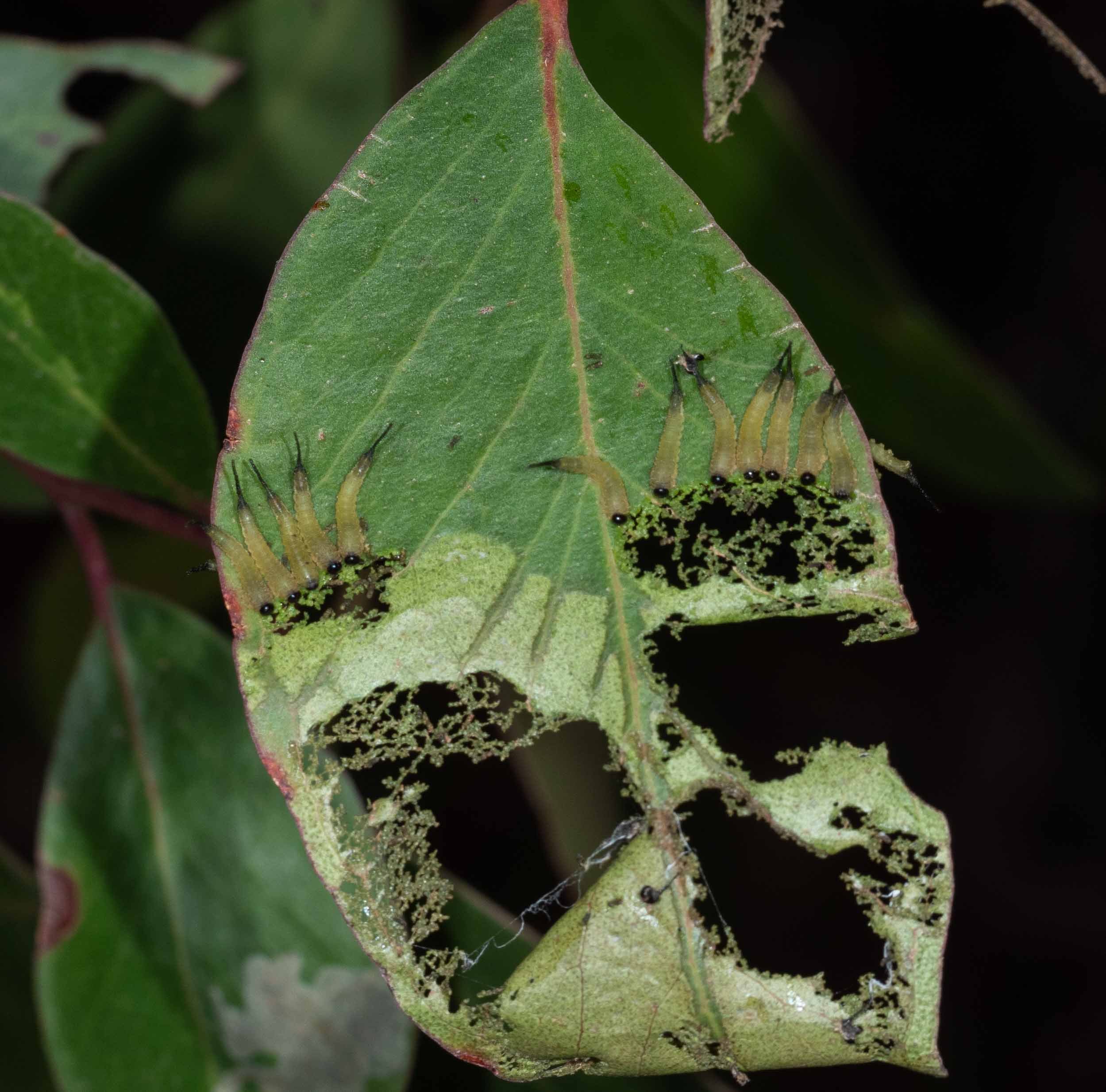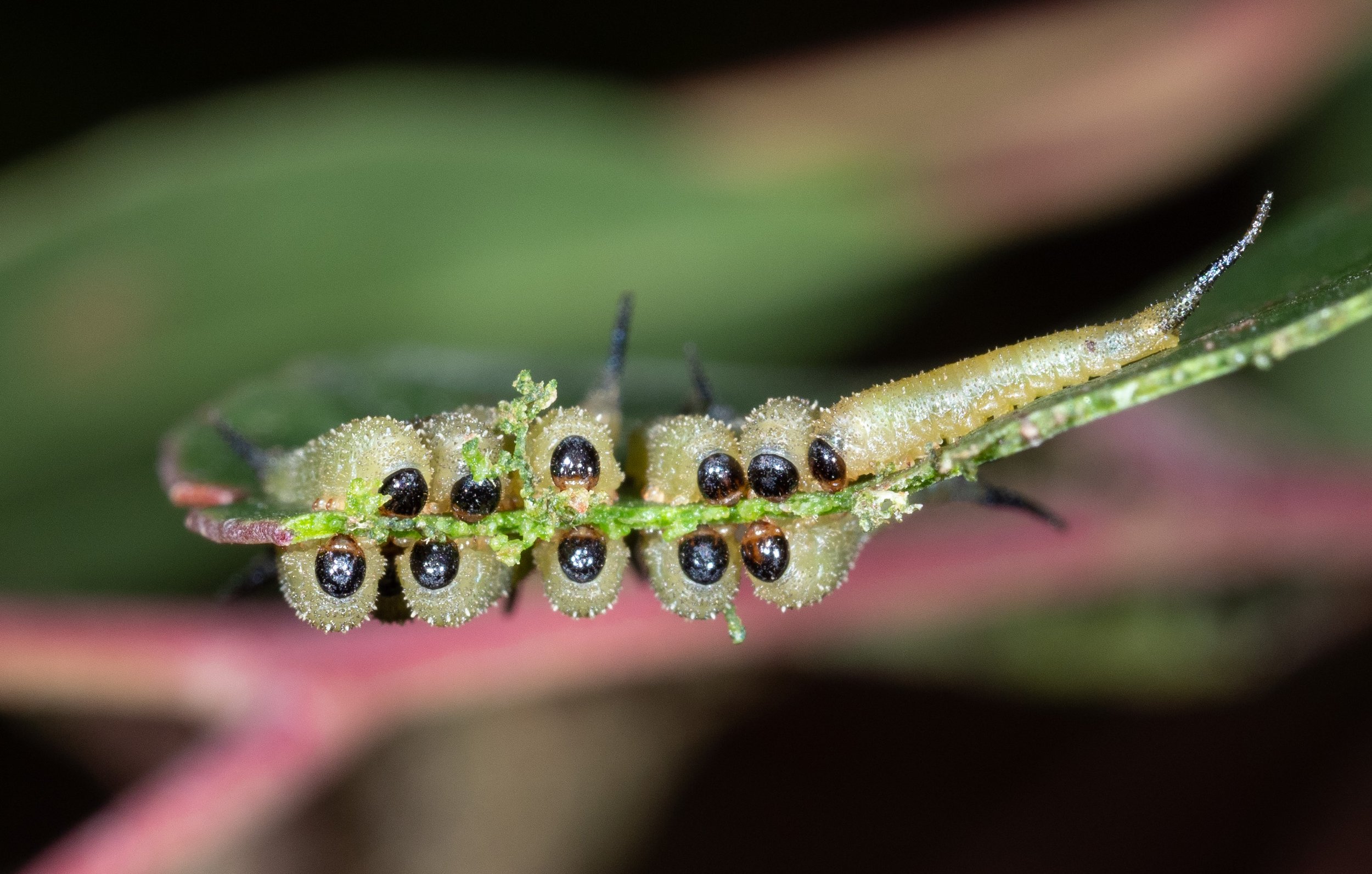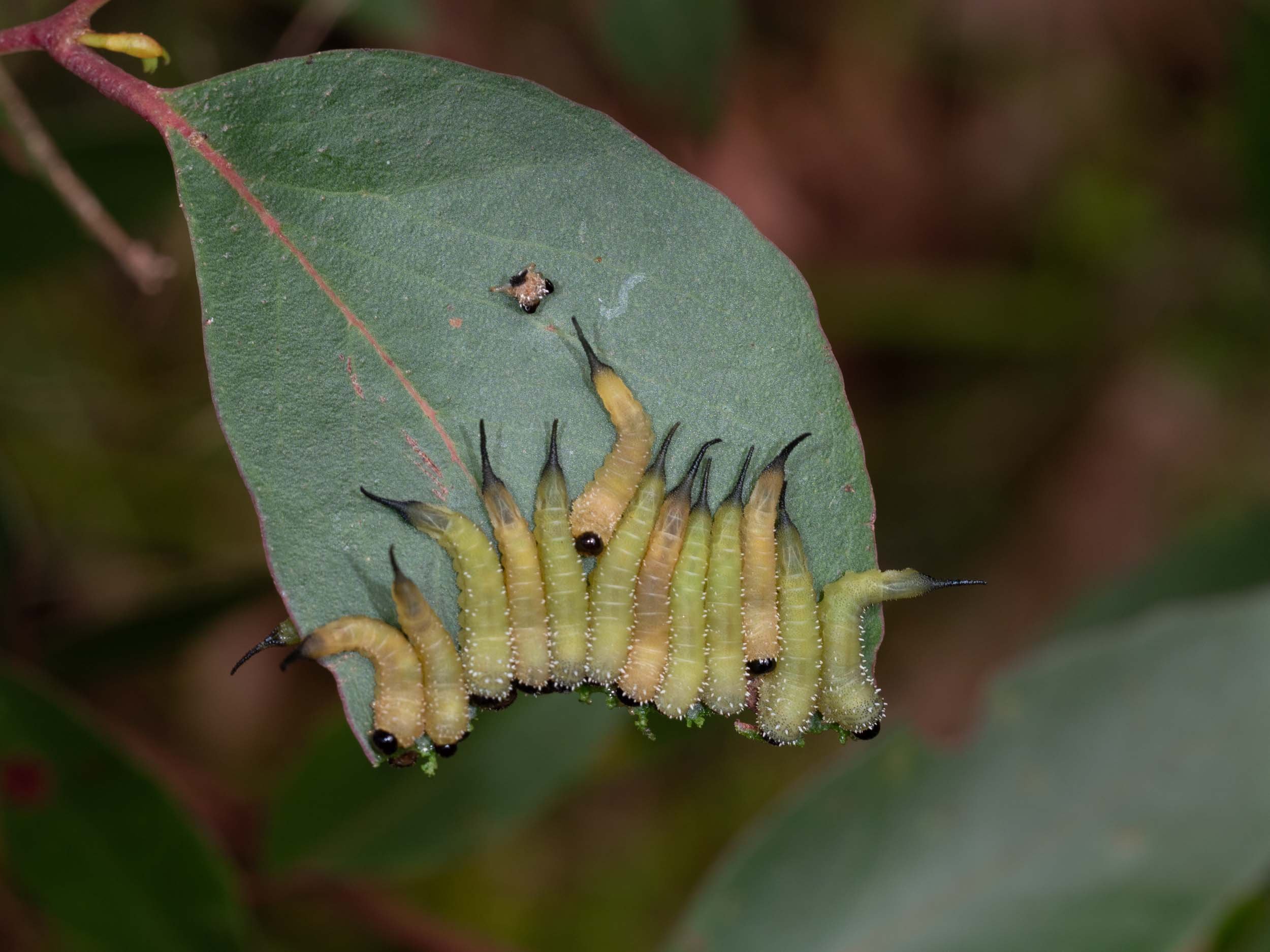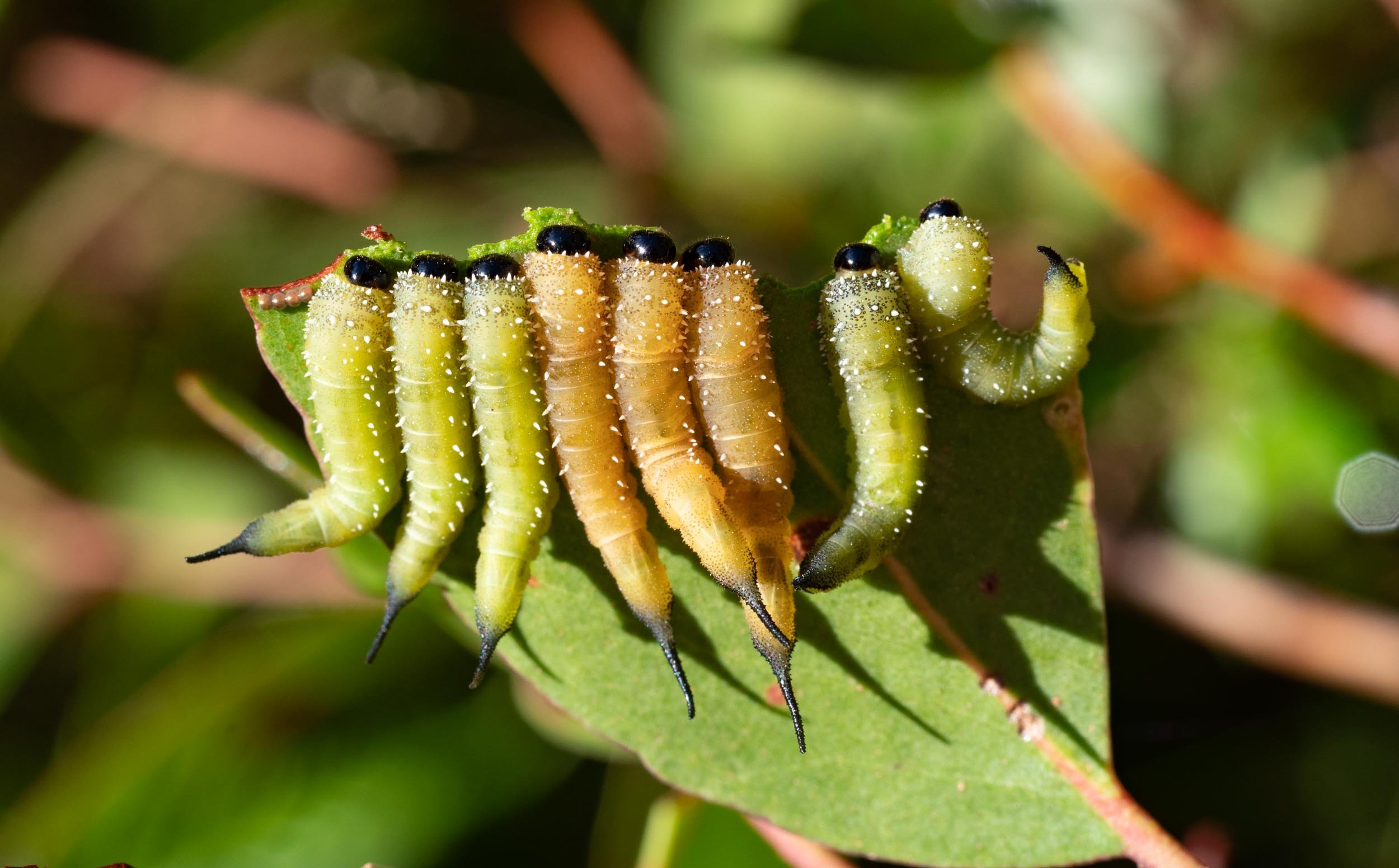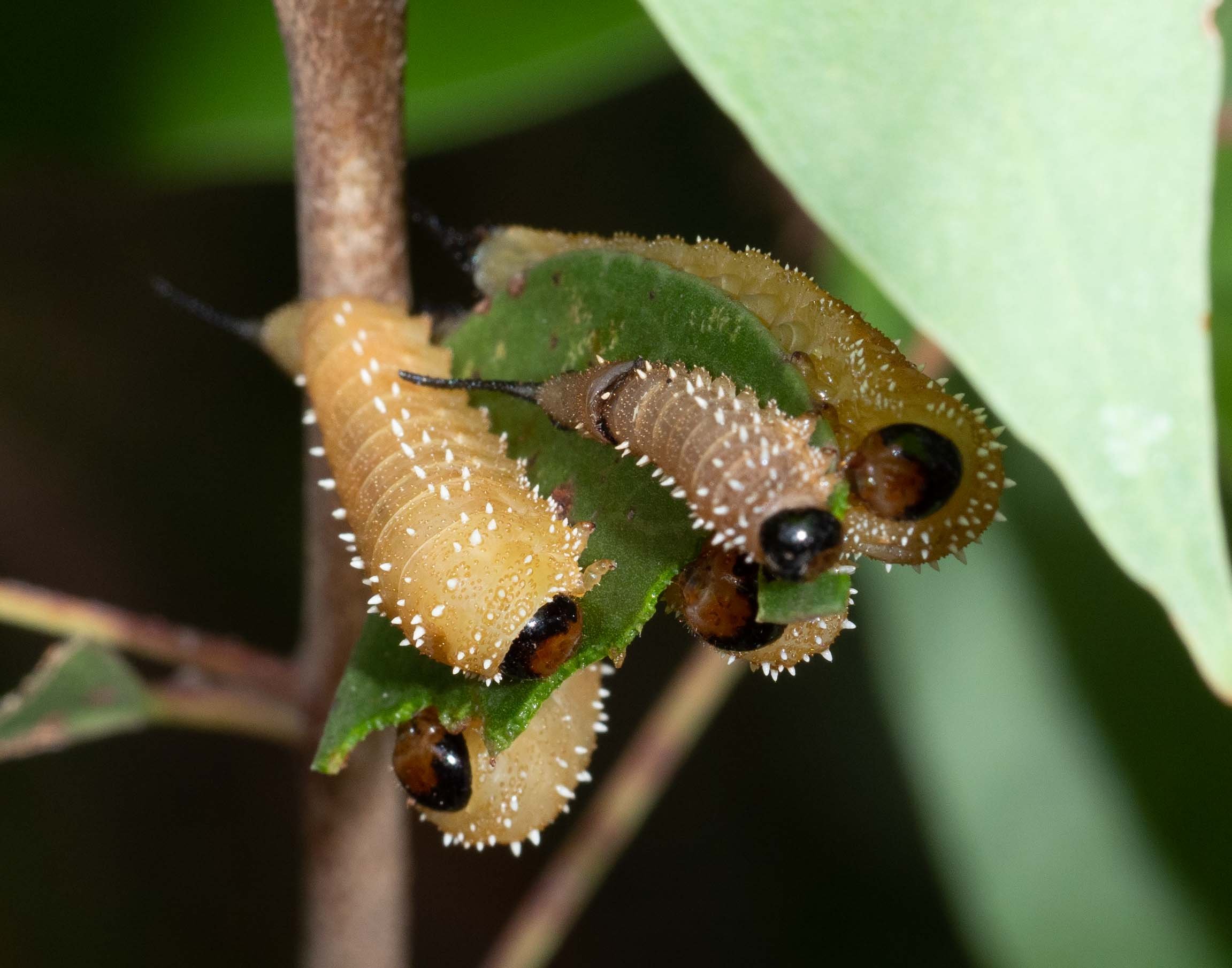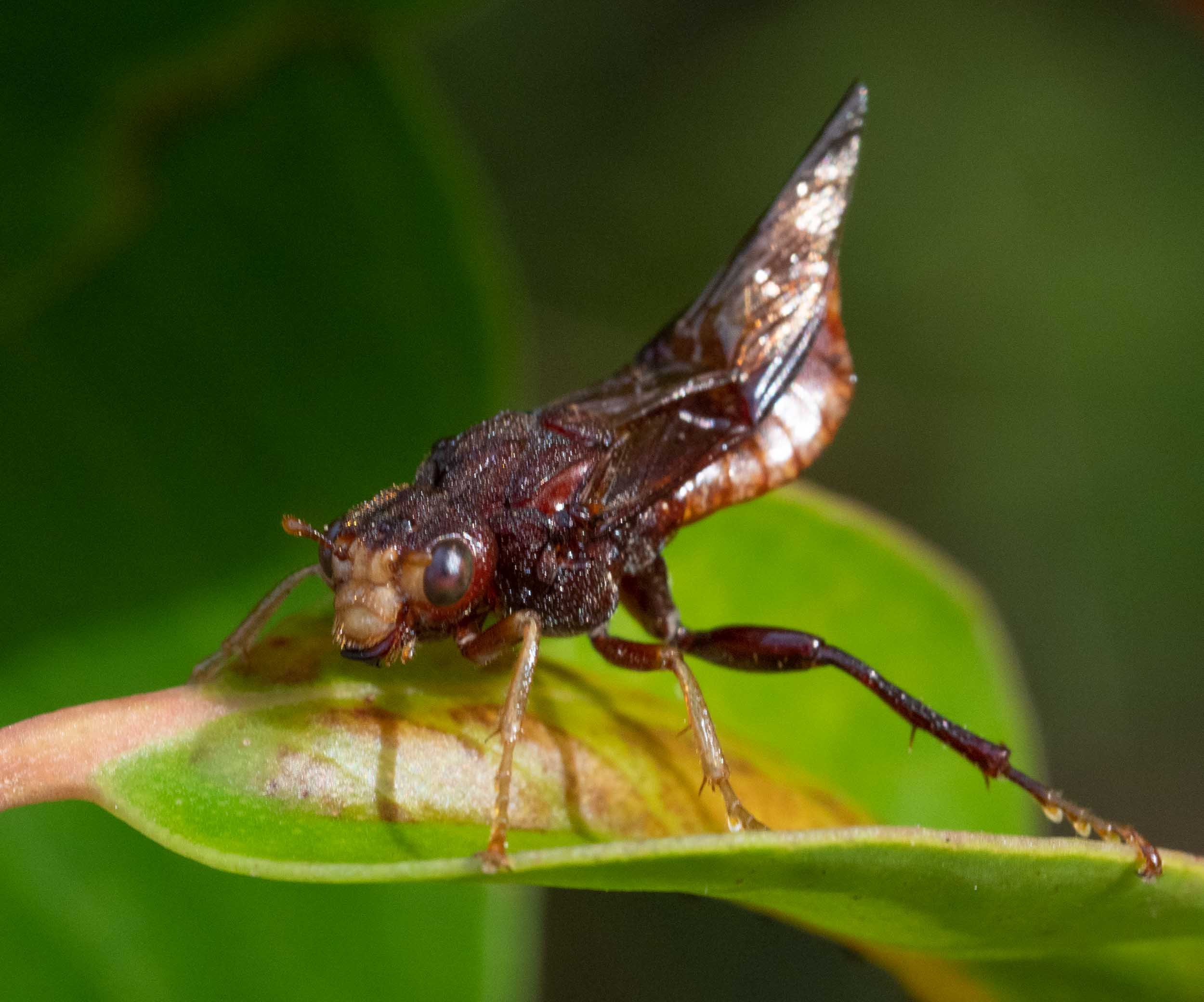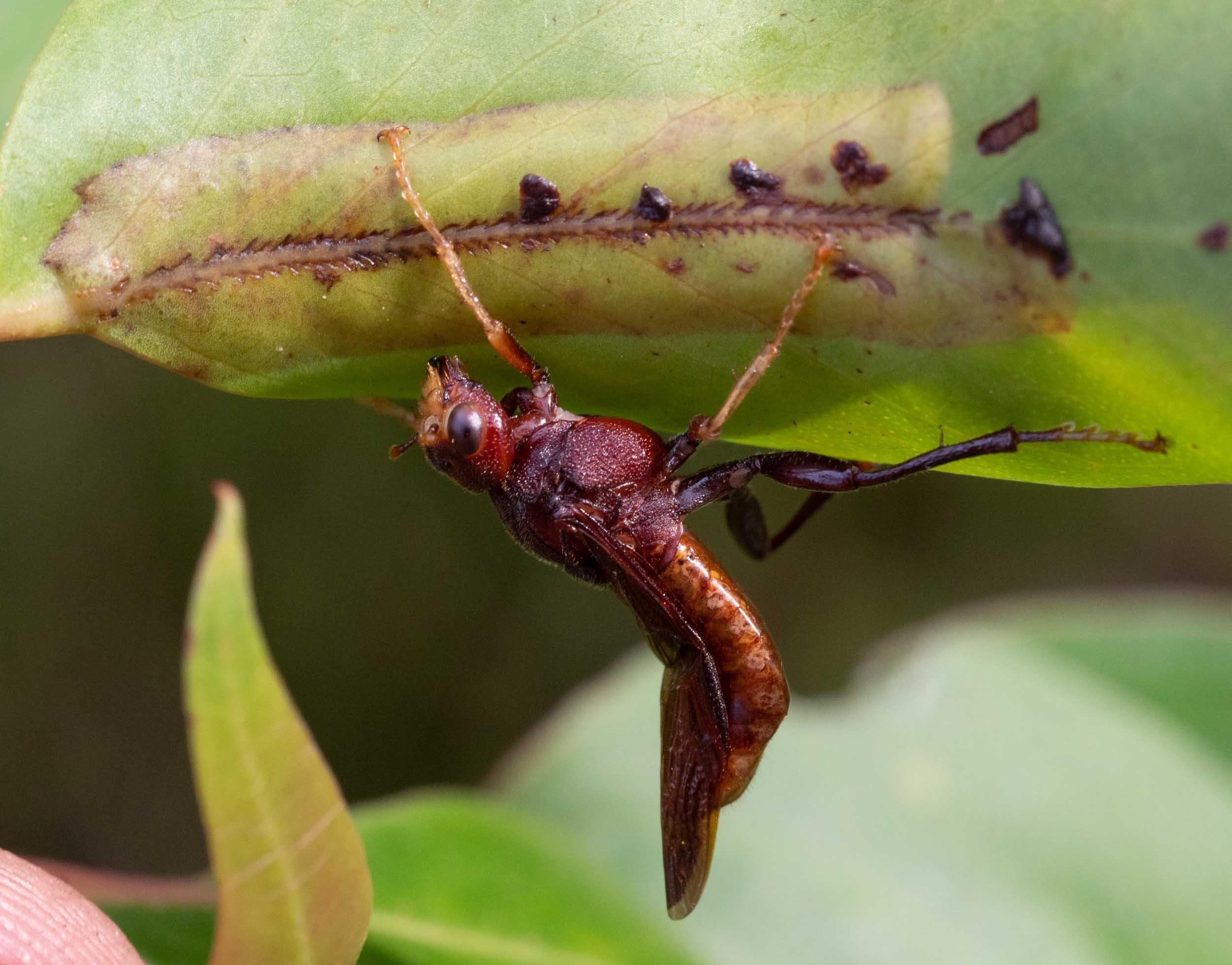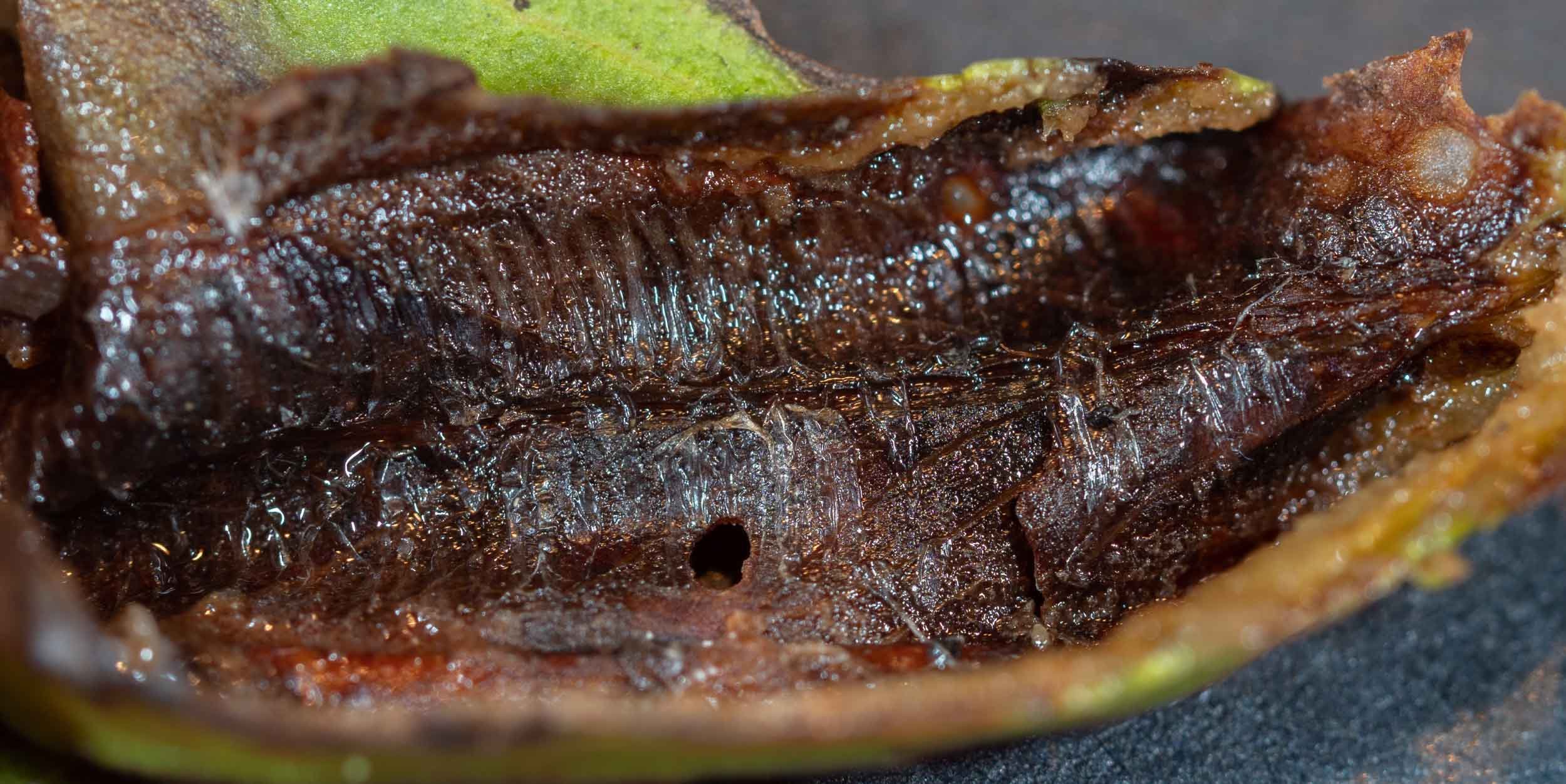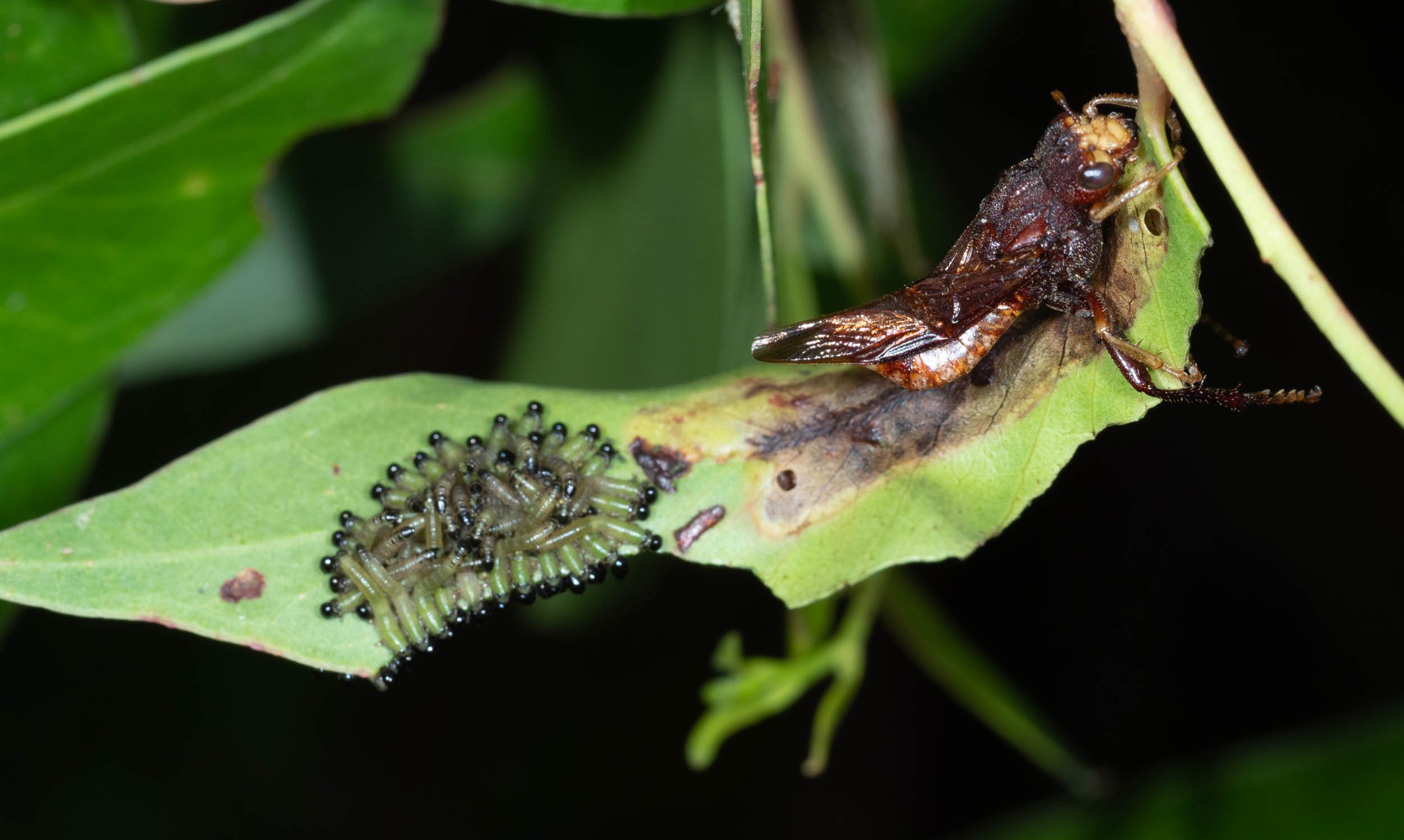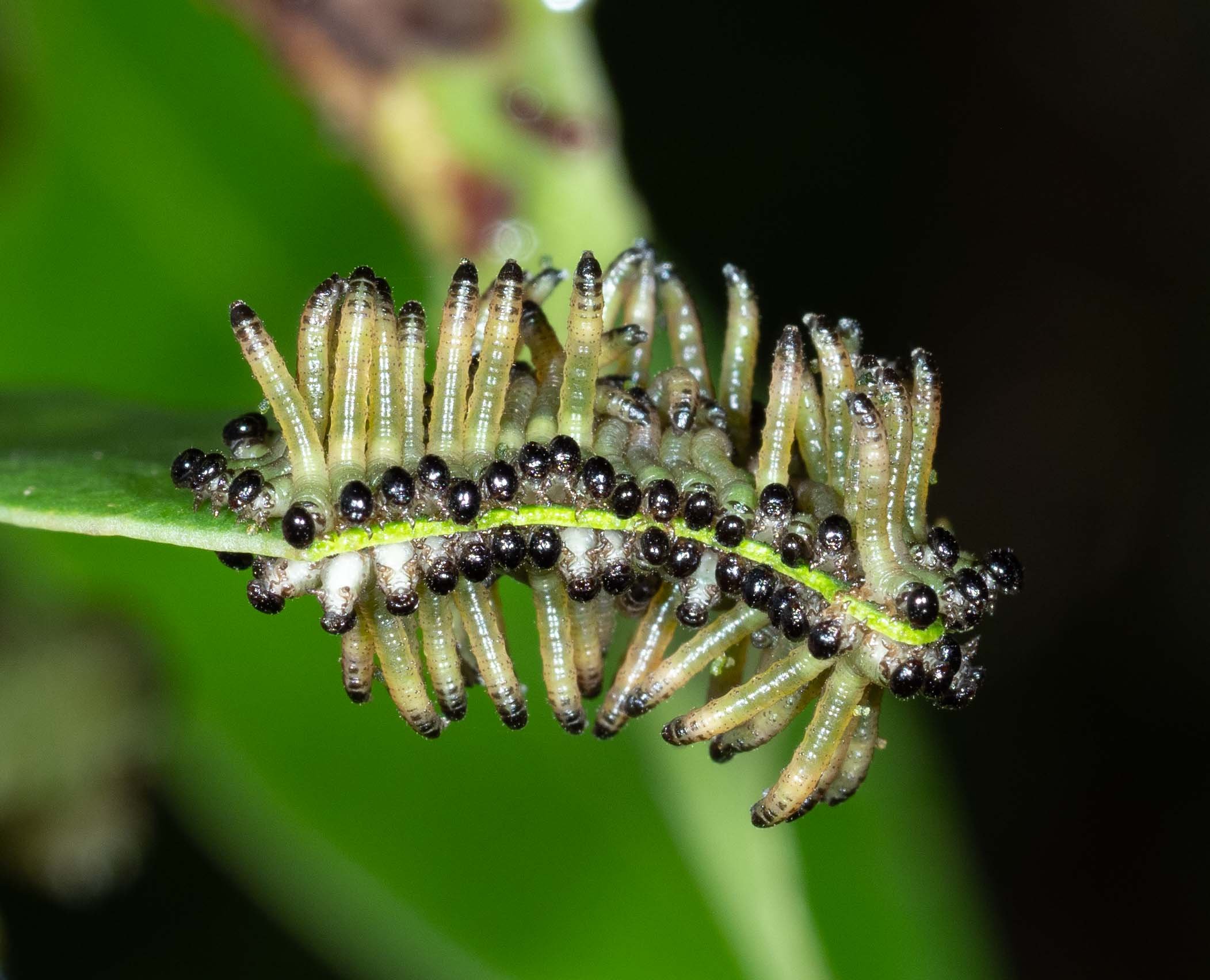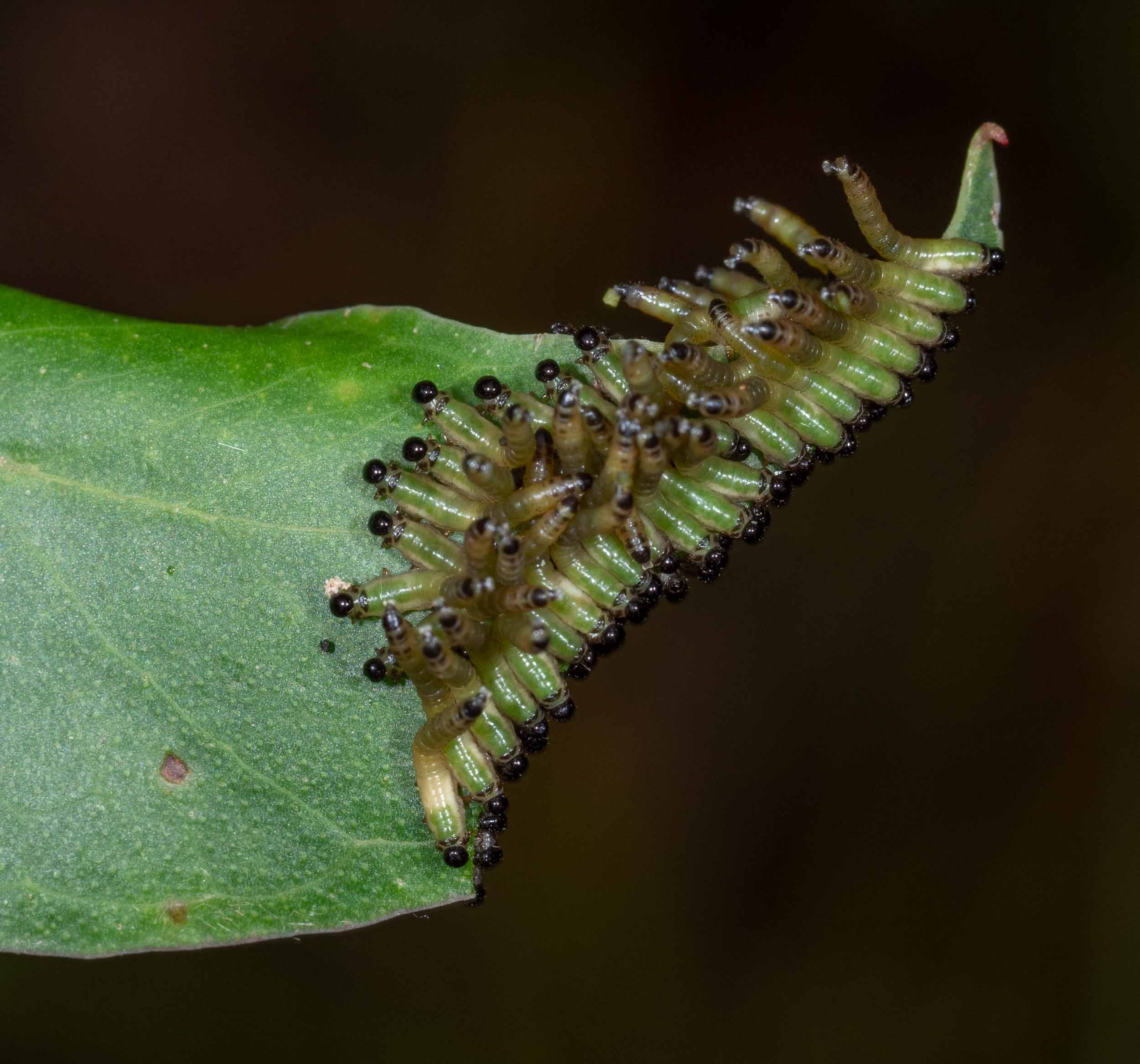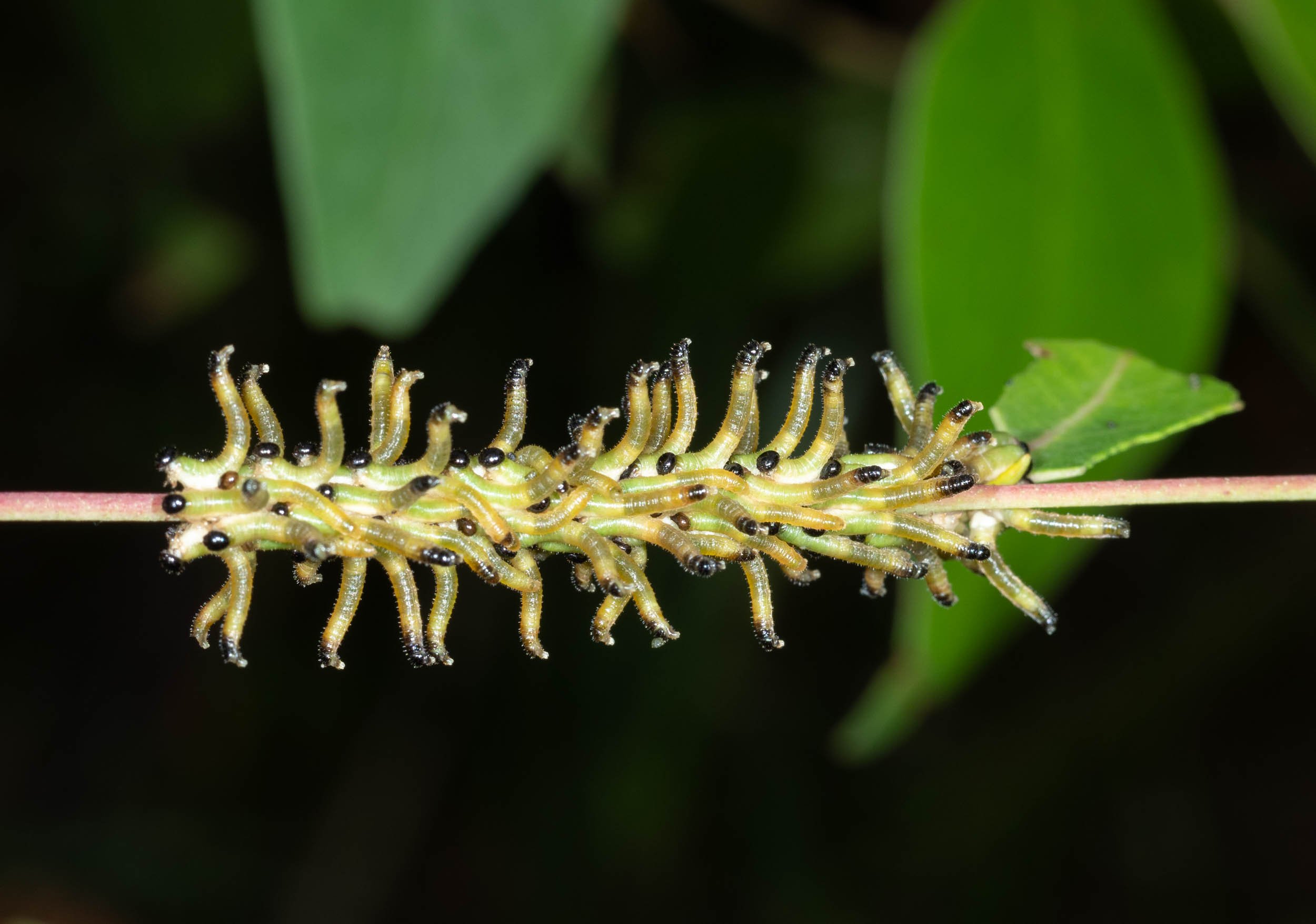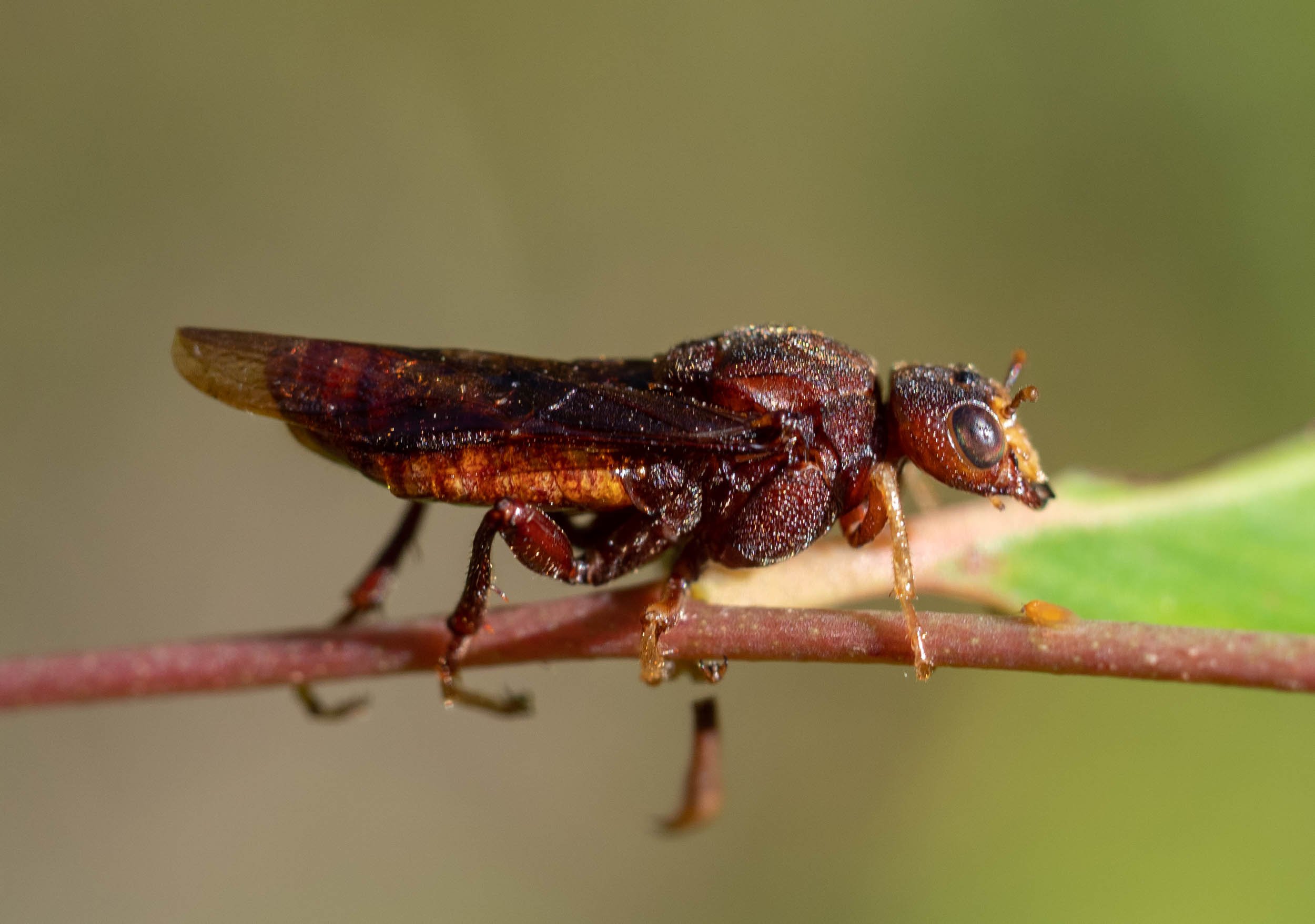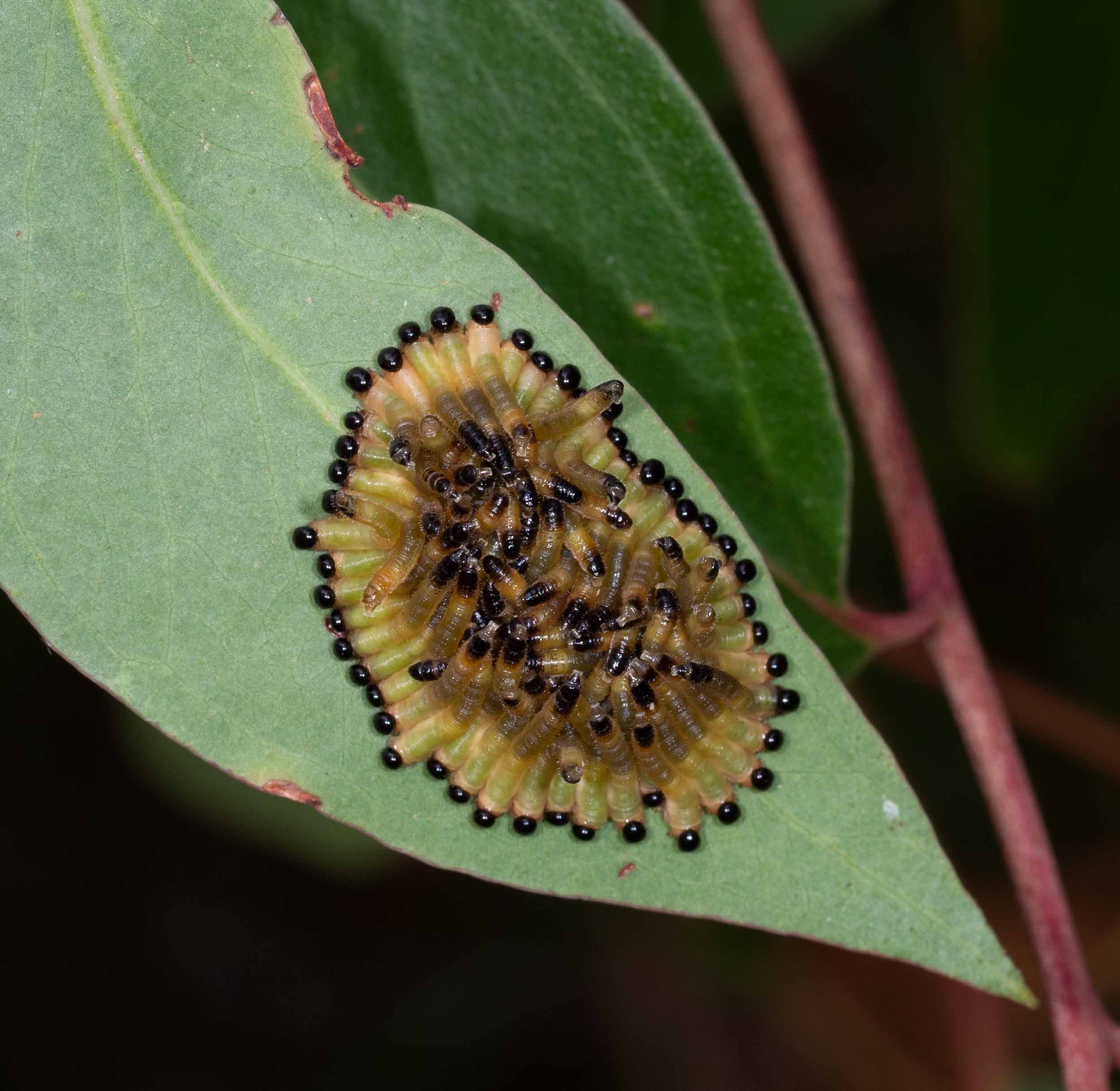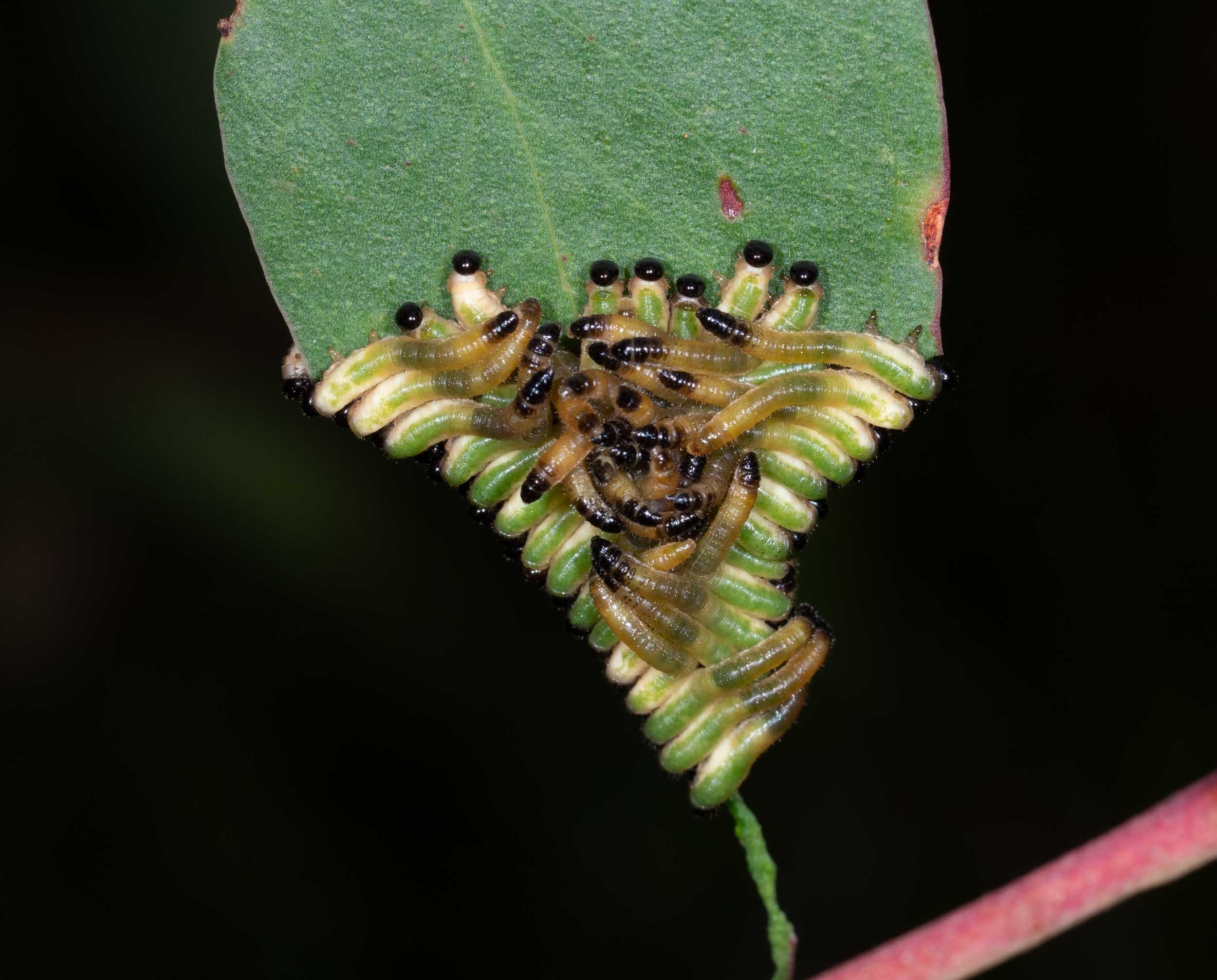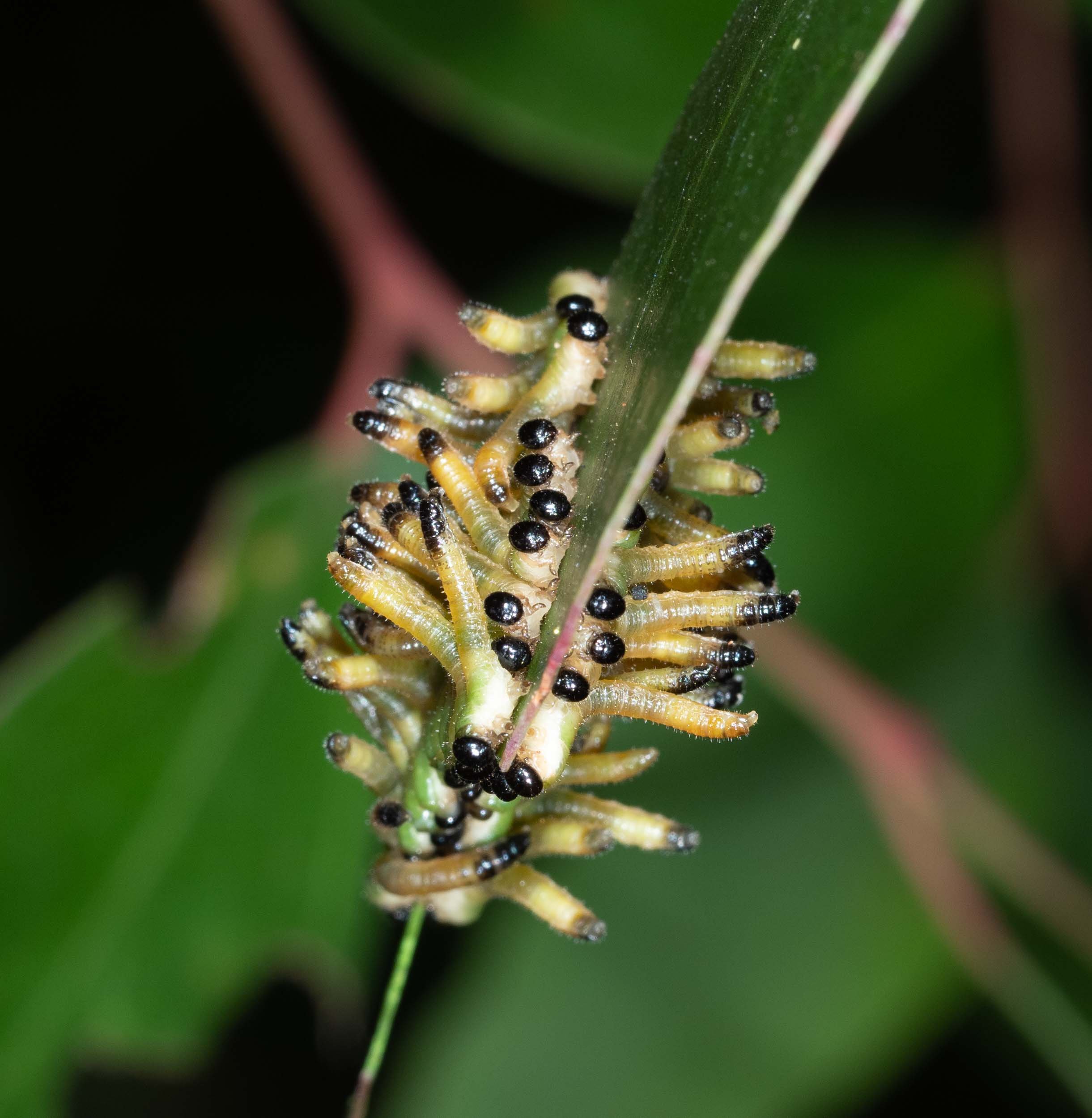
After a lull in early summer, mid January has seen a return of sawfly activity in the forest. I’ve focussed on a single regenerating eucalypt sapling as this is where 3 different sawfly species have chosen to rear their young.
Steelblue Sawfly (Perga sp.)
We first saw a cluster of a dozen Perga sp. larvae feeding in this eucalyptus bush (Eucalyptus globoidea) in November last year.
These larvae disappeared in late November and a search of the soil beneath the sapling revealed no trace of their pupae.
Lophyrotoma sp. sawfly larvae
On 8th January this year I spotted around 25 Lophyrotoma larvae feeding in a cluster on leaves of the same bush as above.
Lophyrotoma larvae can be distinguished from those of other sawflies by their black, whip-like tails. We saw adults of two Lophyrotoma species - Lophyrotoma interrupta and Lophyrotoma cyanea - last spring. These larvae are presumably the offspring of one of those.
2nd Feb, 9:51am: A fortnight on, the larvae have grown substantially. They discard their old skins (one seen behind the group) every time they moult. They now possess white nipples around the perimeter of their body, but are otherwise little changed in appearance. We see them feeding both day and night.
Pseudoperga ferruginea - mother and babies
We first saw an adult of this species in late summer two years ago. So it didn’t take me long to identify the species of this new individual after I spotted her in mid February sitting on a leaf of the same eucalypt sapling.
A new egg clutch
When I turned the leaf over, she moved to its underside, protectively placing herself between me and her precious egg cluster. Each edge of the mid-rib was marked by a row of oblique, dark red slashes. These were made by the saw on her ovipositor, as she injected her eggs into the interior of the leaf. Read more about this clever instrument in section 5. “How sawflies get their name” of my post Six Things About Sawflies.
Hatching!
25th Feb, 9:50am: When I checked the next day, the number of larvae had doubled. So eggs had continued to hatch overnight. You can see two of the holes in the surface of the leaf where the larvae had made their escape from the egg chamber. The chunk in the edge of the leaf has got noticeably larger! The larvae are often seen feeding during the day.
A second mother with her clutch
28th Feb, 8:44am: I noticed a different cluster of Pseudoperga larvae on a branch about half a metre away from the first clutch. They appeared to be as old, if not older than the first lot of larvae. So I must have overlooked them when I sighted that first clutch. They’re doing the familiar threat display. But where is their mother?
28th Feb, 12:47pm: The larvae gather in a circle with their heads facing the circumference. They had apparently just moved to this leaf as 4 hours earlier they were migrating along a branch leading towards it. They haven’t begun to feed. Unlike the other clutch of Pseudoperga larvae, these appear to feed only at night. During the day, they are always seen in a cluster like this in the middle of a leaf.
Here’s a video of that second clutch of Pseudoperga larvae doing their threat display. That’s me being the potential predator.
UPDATE: The mother of the second clutch remained on the same branch where I first saw her on 28th February. She barely moved, except to crawl to the other side of the leaf if I came too close. Then on 11th March, 12 days after my first sighting of her, she hung lifeless on a thread of silk.
I took her inside and made high resolution images of her body and the saw at the end of her abdomen. This is the device she used to cut slits in the surface of the leaf in which she deposited her eggs.


Back to Perga
Let me return to the sawflies I started from - Perga sp.
Larvae
We haven’t yet seen Perga in this eucalypt bush again. However, they have appeared in a small Eucalyptus cypellocarpa sapling about 20m away in the last few days.
They show the same behaviour as the Perga larvae we observed in the Eucalyptus globoidea sapling last November. The 6 late stage larvae rest in a tight cluster during the day and at night they migrate along branches to feed on leaves.
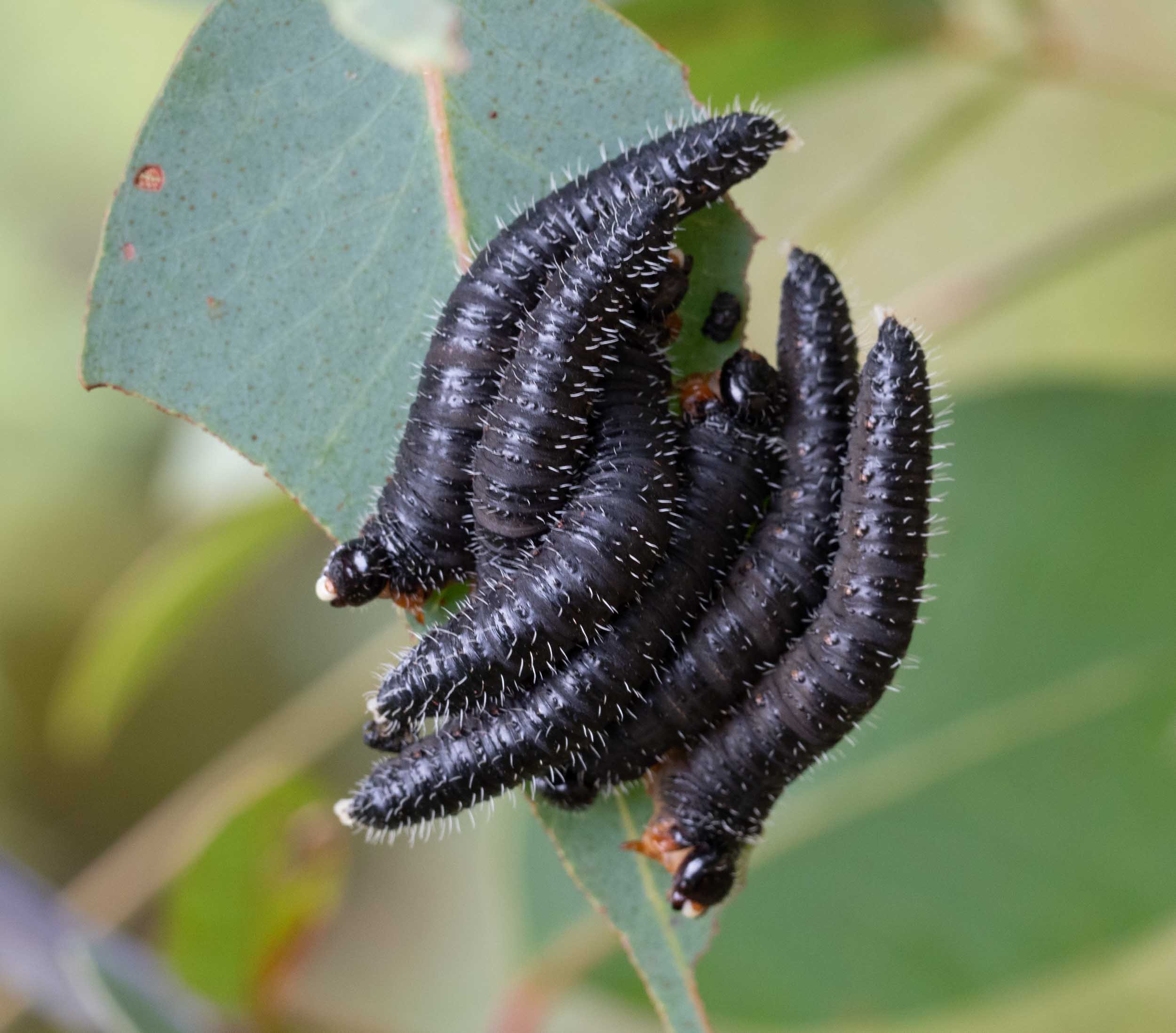
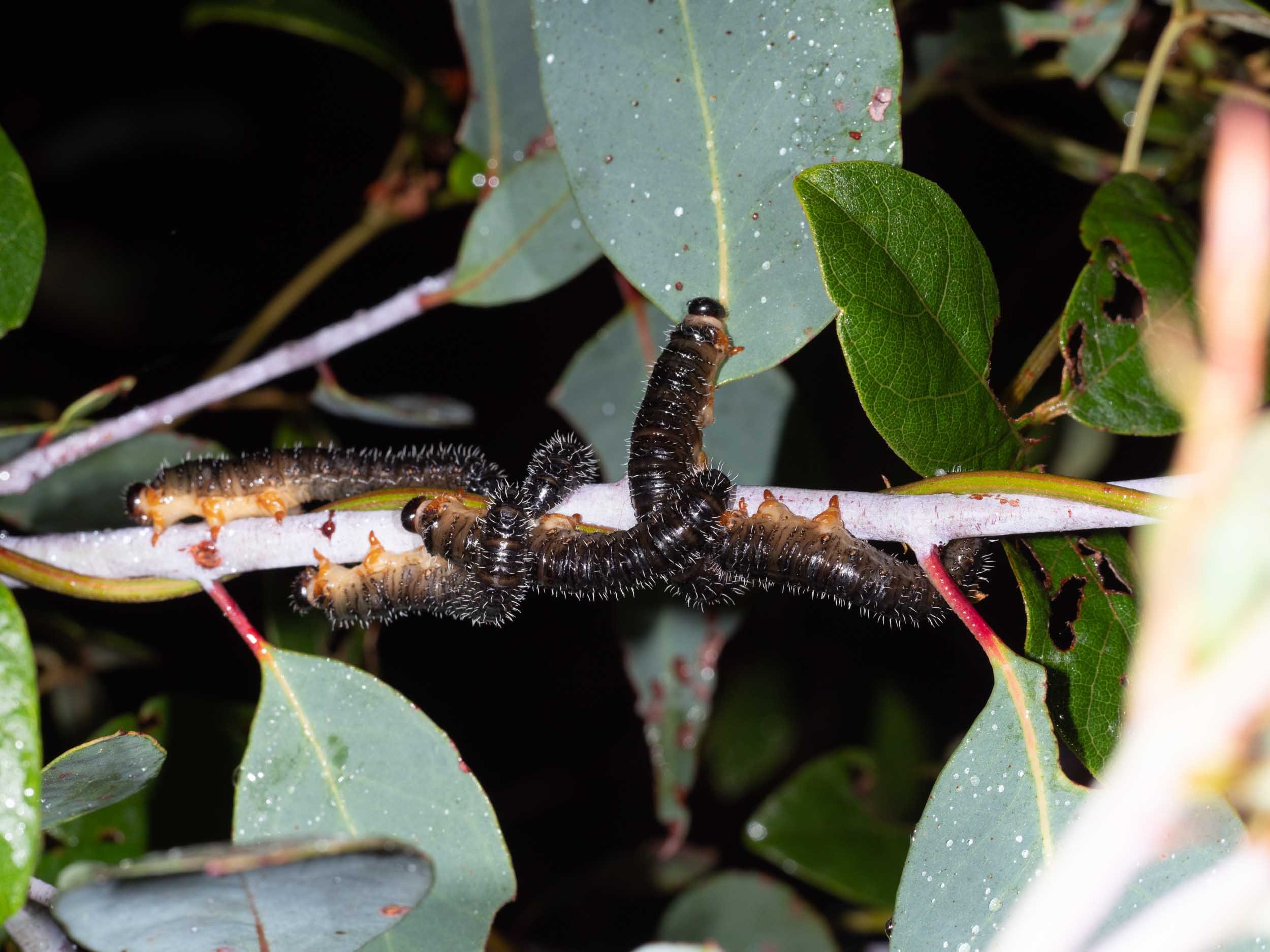
A single regenerating eucalyptus bush has provided the home for 3 different species of sawflies to rear their young.
Sawflies are much more than spitfire grubs. They’re an ancient, diverse group of insects with a fascinating biology.

